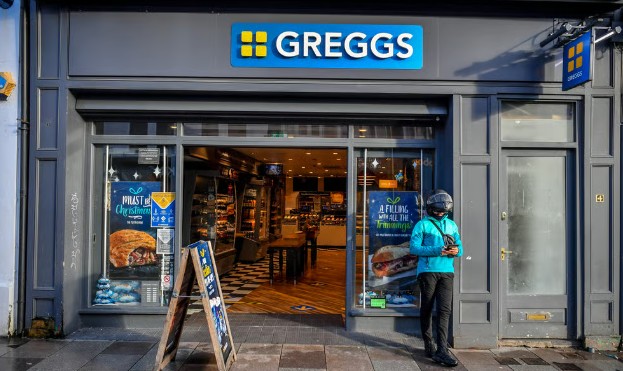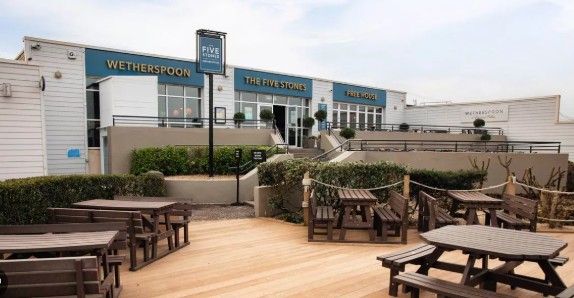What Greggs can learn from JD Wetherspoon
Headlines over recent years have repeatedly, and rather weakly, punned how Greggs has been on a roll as its sausage meat filled pastry delicacy has fuelled the rollout of new stores across the country. As such, Greggs has been able to keep returning to the oasis of store openings.
Since former chief executive Roger Whiteside repositioned the company from a regional bakery business to a national food-to-go brand, the store number target has constantly been increased on the back of an apparently insatiable appetite from consumers for its value-led staples.
While the good times have indeed continued to roll, the aggressive store opening strategy has not been questioned. Greggs is hardly unusual in succumbing to the belief (supported by the City) that it can almost keep opening ever more stores. In the past year, it has opened 87 outlets and closed 56, leaving it with a total of almost 2,650 units, and it has stated it has confidence in achieving its ambitious target of opening between 140 and 150 net new outlets this year.
Infilling in major cities, opening in smaller towns, developing multiple formats to cover all bases and expanding the menu in order to help justify lesser store locations have all contributed to the confidence behind its ongoing expansion.
But with sales having fallen back in June, the City analysts have taken a turn. Dan Coatsworth, investment analyst at AJ Bell, says: “Investors [are] asking if we’ve reached peak sausage rolls territory, and the latest trading update is only going to add to market fears.” Meanwhile Alex Duran, analyst at ThirdBridge, suggests it is possible Greggs has “surpassed its optimal store count”.
He reckons the company should now focus on refreshing its ageing store estate rather than continuing investment in new units. Greggs is hardly the first retailer or hospitality company to come to a crossroads in how it handles its property strategy, as outlet numbers start to rack-up and the micro and macroenvironments change the game.
Giggling Squid has been having a rethink of its growth strategy as it hit 50-plus restaurants. Co-founder Andy Laurillard has stated that labour costs have brought into focus the question of how much further the brand can grow. It has found sites in secondary market towns are not as viable as they once were. This has cast doubt on its previous plan of reaching 150-160 sites across the country. It has prompted a consideration of instead targeting a smaller number of larger sites, alongside investing in its existing estate to leverage more value out of these units – through relocations to larger sites in the same city/town or through extensions.
Such actions can prove extremely lucrative, as proven by JD Wetherspoon, which had seemed to be on route to UK domination through sheer pub numbers – hitting 950 sites in 2014 – as it powered ahead with its roll-out. But then it changed tack, and in the 11 years since, it bought only 42 freeholds and 14 leaseholds while it sold 207 pubs, according to Lavender Bank Partners, which found that between 2011 and 2024, Wetherspoon has bought, sold or bought in the freeholds of an impressive 620 pubs.
After all that activity, it today operates a lesser 820 pubs, having boosted the number of freeholds, skewed to larger premises, removed cannibalisation in smaller towns (dubbed a proximity thinning disposal process) and closed half its pricey airport concessions, while instead focusing on opening further pubs in train stations.
The upshot of this is a business in a much healthier state. Geof Collyer, founder of Lavender Bank Partners, suggests its mammoth restructuring exercise has boosted profitability, improved gross profit margins, reduced central overheads and improved conversion of incremental sales per employee into incremental Ebitda per employee. Collyer hoped the estates team at Wetherspoon received a big bonus for its efforts.
Maybe not yet, because Wetherspoon is not finished. Although it has a target of 1,000 outlets, this number is based around the company having shifted its focus away from heavy capex activity and chunky overheads to now include franchises – having proven the model with university campus sites and Haven caravan parks – and also running the food and beverage proposition within hotels.
Greggs and other consumer-facing businesses reliant on physical footprints can learn plenty from Wetherspoon in how to manage property portfolios with a strategy that does not predominantly rely on simply opening more units. As Greggs has just found out – you can only roll with it for so long before the headlines change.
Glynn Davis, editor, Retail Insider
This piece was originally published on Propel Info where Glynn Davis writes a regular Friday opinion piece. Retail Insider would like to thank Propel for allowing the reproduction of this column.


